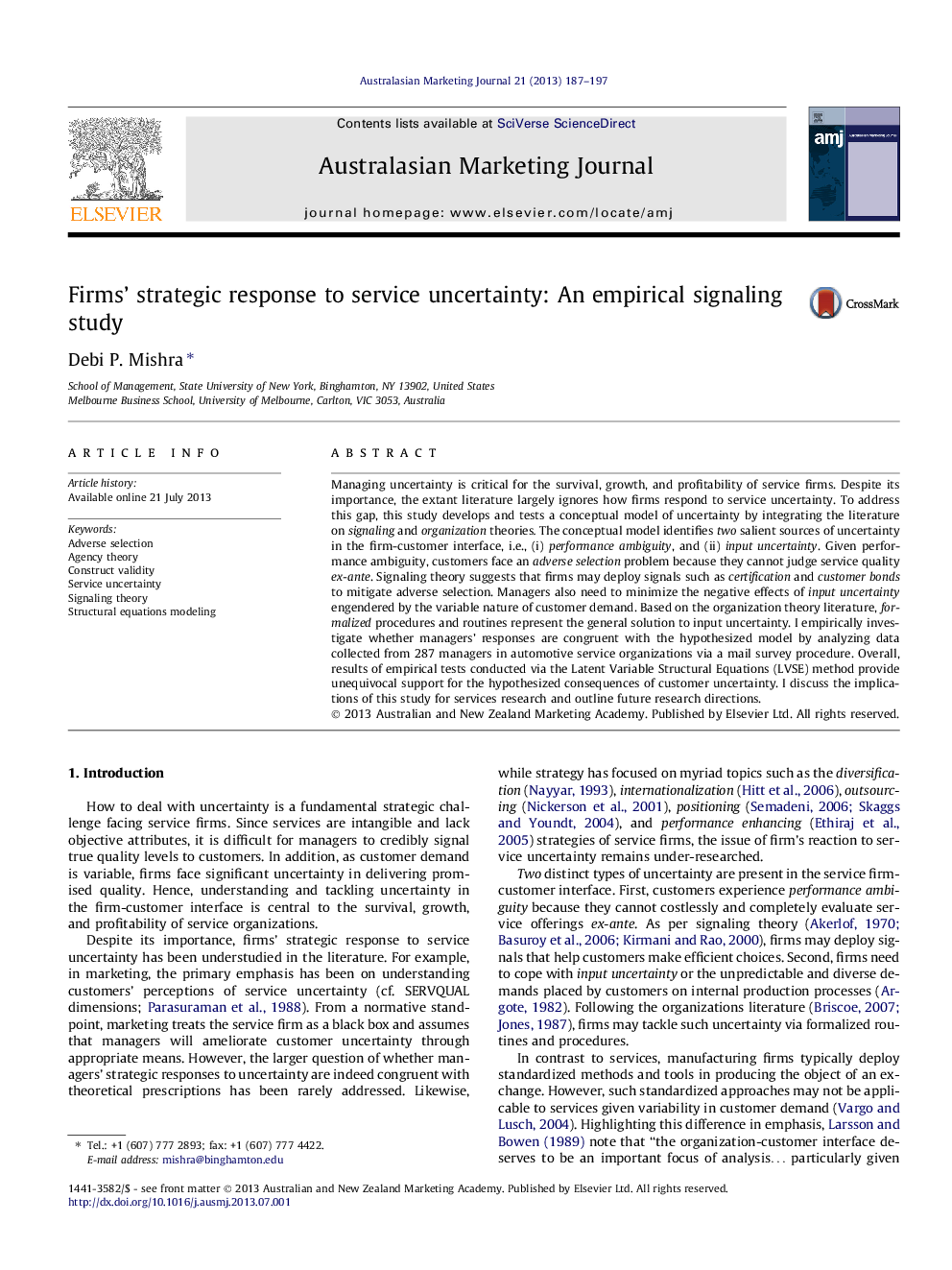| Article ID | Journal | Published Year | Pages | File Type |
|---|---|---|---|---|
| 1027040 | Australasian Marketing Journal (AMJ) | 2013 | 11 Pages |
Managing uncertainty is critical for the survival, growth, and profitability of service firms. Despite its importance, the extant literature largely ignores how firms respond to service uncertainty. To address this gap, this study develops and tests a conceptual model of uncertainty by integrating the literature on signaling and organization theories. The conceptual model identifies two salient sources of uncertainty in the firm-customer interface, i.e., (i) performance ambiguity, and (ii) input uncertainty. Given performance ambiguity, customers face an adverse selection problem because they cannot judge service quality ex-ante. Signaling theory suggests that firms may deploy signals such as certification and customer bonds to mitigate adverse selection. Managers also need to minimize the negative effects of input uncertainty engendered by the variable nature of customer demand. Based on the organization theory literature, formalized procedures and routines represent the general solution to input uncertainty. I empirically investigate whether managers’ responses are congruent with the hypothesized model by analyzing data collected from 287 managers in automotive service organizations via a mail survey procedure. Overall, results of empirical tests conducted via the Latent Variable Structural Equations (LVSE) method provide unequivocal support for the hypothesized consequences of customer uncertainty. I discuss the implications of this study for services research and outline future research directions.
